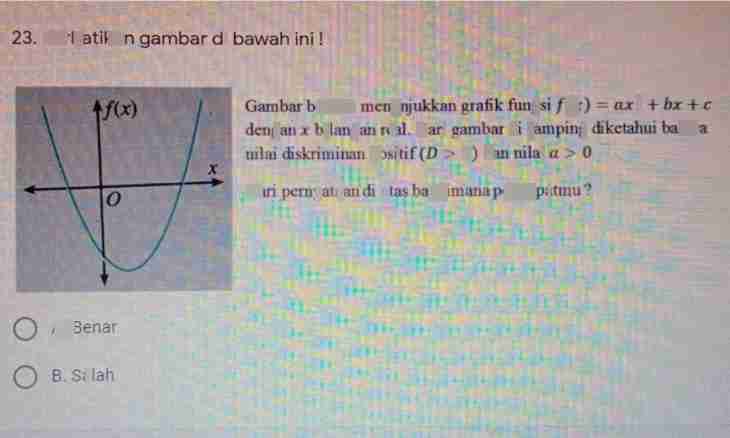The solution of square inequalities and the equations – the main part of a school course of algebra. On ability to solve square inequalities it is calculated a set of problems. You should not forget also that the solution of square inequalities is useful to pupils as when passing the Unified state examination in mathematics and entering a higher education institution. It is quite simple to understand their decision. There are various algorithms. One of the simplest: solution of inequalities of methods of intervals. It consists of simple steps which consecutive performance is guaranteed leads the pupil to the solution of inequality.
It is required to you
- Ability to solve quadratic equations
Instruction
1. To solve square inequality by method of intervals, at first it is necessary to solve the corresponding quadratic equation. We transfer all members of the equation from a variable and the free member to the left part, in the right part there is zero. Roots of the quadratic equation corresponding to inequality (in it the sign ""more"" or"" is less"" it is replaced on ""equally"") can be found on the known formulas through a discriminant.
2. At the second stage we write down inequality in the form of the work of two brackets (x-x1) (x-x2) <> 0.
3. We note the found roots on a numerical axis. Further we look at the sign of inequality. If inequality strict (it is ""more"" and ""less""), then points which we note roots on a coordinate axis empty otherwise (""it is more or equally"").
4. We take number, more to the left of the first (the root, right on a numerical axis). If at substitution of this number in inequality, it is correct, then the interval from ""minus infinity"" to the smallest root is one of solutions of the equation, on an equal basis with an interval from the second root to ""plus infinity"". Otherwise the interval between roots will be the decision.

